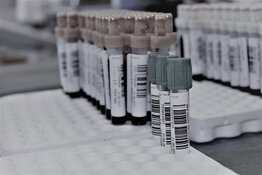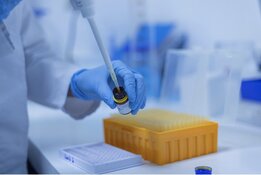John McCamant: I would say I'm surprised that it's only down 60%, given that this has been far and away the worst economic period of our lifetimes. The fundamental question is: did these companies wreck 60% of their value over the last three years? Is this industry in its totality worth 60% less? Was it extremely overvalued in 2008? We could debate that. But, I would certainly argue that over the last three years with so many advances in the clinic and the new products we have now, we have created value. It just hasn't been reflected in the stock prices.
TLSR: Are we in a true secular shift?
JM: Well, it is just not that simple because we're not in an environment where we are going to have clean shifts. We are now in a big political year, and there is global upheaval. But before we started the economic downturn, we were in a secular shift with a rapidly aging population and a tremendous amount of wealth being created. It's not just in the United States but also in China and India. People are living longer and the demand on healthcare is basically one of mankind's greatest challenges going forward. The business model has been to focus on research and development (R&D), the engine that drives new pharmaceuticals. But today, the emphasis is to cut to try to create efficiency. This is probably truer today than it was three years ago. The cost of bringing a new drug to the market today is anywhere from $1 billion (B) to $4B. These are very large numbers.
TLSR: Biotechs are more efficient than big pharmas, aren't they John?
JM: I can guarantee you most of the biotechs do it all more efficiently. You have companies more focused basically because the capital markets have been very difficult, and you have to come in with good stories and allocate your capital well. This is no market for an IPO of a company that just has a great idea.
TLSR: Do you believe the recent upward movement has anything to do with fundamentals?
JM: Yes, these are unprecedented markets we are coming out of, and one needs to pull away and look at the big picture. What are the underlying fundamentals? Are you and I going to be using drugs? Once we have the jobs situation and our economy in halfway decent shape, healthcare really starts to rise near the top of what people are going to spend money on and what they actually need.
TLSR: We have seen a couple of interesting acquisitions recently with Bristol-Myers Squibb Co. (BMY:NYSE) acquiring Inhibitex and Gilead Sciences Inc. (GILD:NASDAQ) getting Pharmasset Inc. (VRUS:NASDAQ). Do you think these have anything to do with the kind of optimism we're seeing in the biotech markets?
JM: Well, I think it's a reflection of all of the above. So, if you are a larger company and you are making money, do you feel a little better than you did in the last two years? I would say absolutely. Your business has weathered most of this recession, and now your goal is to build your business.
Gilead paid a huge chunk for Pharmasset, about $11B, but it was considered a leader. The story we are hearing is that there were four other companies that didn't get that asset. It's impossible to put this into some sort of chart, data or algorithm, but there is a psychological tipping point where these large pharmaceutical companies and big biotechs that have huge sales forces and infrastructure need drugs to sell, and they need to fill their pipelines.
There have also been two recent acquisitions in the cancer space. Micromet Inc. (MITI:NASDAQ) is being bought by Amgen (AMGN:NASDAQ), and another small private company, Avila Therapeutics, is being bought by Celgene Corp. (CELG:NASDAQ). So, it looks like we are getting some acceleration right now.
The other thing is that over the last few years in these difficult capital markets, the big pharmaceutical and the large biotechs were just being a little more patient. And, when they are all patient together, they can slowly work thorough the deals and get the ones they want. Once they miss a deal or two, they should become more aggressive, and aggressive bidders will drive more acquisitions and at higher prices.
TLSR: Is this recent M&A wave going to stimulate IPO activity?
JM: IPO windows don't really exist anymore, but investment banks will continue to put those little seeds in our heads. The IPO model in biotech was flawed. The IPO was a way for venture capitalists and investment banks to dump their investments on the public. Very few people will say that, because no one really speaks for the public retail investor. But we do. IPOs will always be there, but they have to be good. IPO windows are horrible because they are not discriminatory. The IPO should always be a discriminatory process where a company becomes public when it is ready. In the past we had open windows with good and bad things coming in at the same time. And that's just not a good model.
TLSR: John, can we talk about the small and midcap companies you are recommending to your readers currently?
JM: Certainly. I will start with the two bigger names and then some that are smaller cap. The two larger names are Incyte Corp. (INCY:NASDAQ) and Pharmacyclics Inc. (PCYC:NASDAQ).
Incyte just got approval in November for a drug called Jakafi (ruxolitinib). It's a Janus-associated kinases (JAK1 and JAK2) inhibitor that is approved for myelofibrosis, a bone marrow/blood cancer. Jakafi is the first drug ever to be approved for this indication by the FDA. It is partnered with Novartis AG (NVS:NYSE), and it looks like the companies have a solid launch going.
In addition, Incyte has almost the same molecule (LY3009104) with one slight tweak that differentiates it from Jakafi in a phase 2b trial for rheumatoid arthritis (RA) with partner Eli Lilly and Co. (LLY:NYSE). Data are coming mid-year, and if they are good, we believe we'll find that this stock has been very much underappreciated. In phase 2 data to date, this product, a small molecule oral drug, has shown the same potency as injectable TNF (tumor necrosis factor) inhibitors, such as large molecule monoclonal antibody Humira (adalimumab) from Abbott (ABT:NYSE), which is now the world's biggest selling drug at $13B/year. Now $20B of TNF inhibitors are being sold per year, but remember these anti-TNFs are injectable drugs with high side effects. The Incyte/Lilly drug (LY3009104) would be a pill, and it has huge potential. We want to compare apples to apples, and so we compare its ACR (American College of Rheumatology) scores for RA to the TNF inhibitors, and they are really good. An oral drug would be a huge difference maker for RA patients over an injectable.
TLSR: Incyte is up 15% since January 2. What can we expect going forward?
JM: It still has some room to go, we believe. It's definitely on the M&A list and what we've seen historically is that big pharma prefers to buy some of these biotechs after they get their first drug approval. This company and its assets are significantly derisked and pharmas may be willing to pay for it. We are very excited about this program and we believe in this stock.
TLSR: What about Pharmacyclics? It's up in a big way since the beginning of the year.
JM: Pharmacyclics has a great team and a really good CEO in Robert Duggan, who owns 25% of the company. Part of the reason the shares move so much is there is just not a lot of stock available for purchase. The company has a B-cell lymphoma drug (PCI-32765) in phase 2, and in December a deal for the product was made with Janssen Biotech, which is the cancer unit of Johnson & Johnson (JNJ:NYSE). It is one of the largest and best cancer deals we have ever seen with a $150M upfront payment and a 50/50 profit/loss split worldwide. But the upfront $150M plus regulatory and development milestones could total as much as $975M.
This drug already works in a couple of lymphomas. It may work in things like non-Hodgkins lymphoma (NHL), which is the target of Rituxan (rituximab) from Genentech, a unit of Roche Holding AG (RHHBY:OTCPK) and Biogen Idec Inc. (BIBB:NASDAQ). This is potentially the most exciting molecule in hematology/oncology that we have seen. Heme/onc has been a hugely successful area for Celgene, Genentech and others. This is really one of the sweet spots in cancer investing. Duggan has brought in some very good former Genentech people who helped guide the development of Rituxan. Longer term, these B-cell drugs could also work for RA, and that is why you are seeing a lot of excitement about Pharmacyclics. It's one of the most exciting names in biotech right now.
TLSR: What's so interesting for me is that this drug, PCI-32765 has been very successful in treating lymphoma patients who have been pretreated with other products such as with Velcade (bortezomib) from Millennium Pharmaceuticals, a unit of Takeda Pharmaceutical Co. Ltd. (TKPYY:OTCPK). The response in these pretreated patients has been dramatic.
JM: It's bigger than that because people are clearly seeing that this might work in NHL and RA and might be a much better molecule than Rituxan. It looks like an absolute homerun with its great efficacy in the lymphomas. That's why it's key to have these B-Cell people from Genentech on the team. They understand these molecular pathways and what is going on here better than anyone else in this space. And it's a small molecule that can be used orally, another great advantage.
TLSR: What small caps are you talking to investors about?
JM: We have three smaller ones. OncoGeneX Pharmaceuticals (OGXI:NASDAQ) is a very interesting, underfollowed and underappreciated Canadian biotech that has licenses to the two lead cancer drug candidates from Isis Pharmaceuticals Inc. (ISIS:NASDAQ). Custirsen (OGX-011) is the lead drug. It is in two large phase 3 trials for castration-resistant prostate cancer. It's partnered with Teva Pharmaceutical Industries Ltd. (TEVA:NASDAQ), the world's largest generic drug maker, which is going to be a big player in generic chemotherapies. Teva is now making a huge push into branded pharmaceuticals.
Custirsen has shown excellent synergy with Taxotere (docetaxel) from Sanofi (SNY:NYSE). It actually helps in resistant cancers and gets into pathways where resistance develops and overcomes the resistance. It may work in many of the different types of cancer where other prostate cancer drugs are all fighting for market share now, including Provenge (sipuleucel-T) from Dendreon Corp. (DNDN:NASDAQ). If Custirsen works in other cancers, OncoGenex Pharmaceuticals will be a home-run stock (Teva is starting Phase III in lung cancer this year).
TLSR: What is another small cap?
JM: We believe Sangamo BioSci (SGMO:NASDAQ) is a leader in gene therapy, but management won't say gene therapy because the term has such a negative bias. It recently did a great deal with Shire Plc. (SHPGY:NASDAQ; SHP:LSE) for preclinical targets and got double-digit tiered royalties. Note that I said preclinical targets. That's about as good as you're going to get in biotech. The key here is that the technology can literally change a monogenetic, a single gene, defect and have it be permanent. The partnership with Shire was Sangamo's first human therapeutics deal, and so that validates the human therapeutics side of its business. The company also has very good deals with Dow AgroSciences, a unit of The Dow Chemical Company (DOW:NYSE) and also with Sigma-Aldrich Corporation (SIAL:NASDAQ) on the tools side. Sangamo is the leader in its space, and its intellectual property (IP) has been fully validated.
The company has a very interesting HIV program. Do you know of the Berlin man? The Berlin man has HIV, but his immune system is fully intact. He got another copy of the CCR5 gene by accident during a bone marrow transplant. What Sangamo is doing is finding some patients with these copies. Investigators are changing the CCR5 gene in an early phase 2 trial and showing that they can rebuild the immune systems of HIV patients. This is what we could call a functional cure for HIV. The patient would not take antiviral drugs for a lifetime but would instead have a gene therapy procedure that would allow the patient to fight off the virus with his own immune system.
TLSR: Has this shown proof of concept?
JM: It has not shown broad placebo-control proof of concept. But it has shown proof of concept in humans. The other thing with viruses is that you can demonstrate very clean endpoints as we've seen with HCV (hepatitis C) and HIV. These are measurable. We'll have data throughout the year on that and there is a point where that could get very exciting.
TLSR: Shares are up 38% in the last 12 weeks.
JM: The Shire deal was a big for the company, and that's why shares went basically from $3 to over $4.
TLSR: Was there one more you wanted to tell me about?
JM: The last company I want to talk about is Aastrom (ASTM:NASDAQ). We believe it to be the world's leader in stem cells. The company is about to enter a phase 3 trial that has been signed-off on by the FDA for critical limb ischemia (CLI) where blood flow to the legs and feet is reduced and patients end up having legs amputated. This is an autologous procedure, meaning that the patient's own stem cells are taken from the body, in this case from hip marrow, and then processed, expanded as a multicellular dose and then reinserted into the patient in 20-minute procedure. This autologous cell technology was pioneered by Dendreon with its Provenge therapy. It's basically about modifying a patient's cells outside the body and then giving them back to that same patient.
TLSR: Why is it important to use an autologous system?
JM: By using your own stem cells you avoid all the IP problems, for one, and second you also avoid all of the embryonic stem cell religious and political controversies. In addition, the FDA is comfortable with personalized treatments like this, whether it be bone marrow grafts or Dendreon's Provenge cancer-treatment model. If this works and if Aastrom gets approval, we could be using these types of procedures further down the road in many of the other potential stem cell areas, including some of the more exciting ones such as regenerative medicine where we're really starting to see things happen.
TLSR: An autologous graft could be a two-edged sword. You avoid immunotoxicty because patients receive their own cells back. But couldn't those cells contain the same genes and produce or allow the same disease phenotype to reappear at a later time?
JM: That's why the company is running the trials, to show safety and efficacy over time. Most of the failed wound healing drug candidates focused on a single protein, but at the end of the day the body uses many different proteins in the wound healing process. So, one of the underlying theories is that by using stem cells we might get the full cascade of wound-healing proteins instead of just one specific protein. That could make a big difference. Off-the-shelf therapies make sense in lots of ways, but they have been extremely tricky with a lot of issues. There are still so many IP problems, and that scares me as an investor. Aastrom can bypass so much of that.
TLSR: John, do you have an investment theme?
JM: Well, I know a lot of people are talking about and focusing on platforms, and a couple of our names fit that theme. But, we are really looking for classic, innovative biotechs. We are looking for real fundamentals, but also good management teams that can execute. Right now we are seeing tremendous opportunity for investors and traders.
TLSR: Many thanks to you, John. I have enjoyed it.
JM: My pleasure, George.
John McCamant joined the Medical Technology Stock Letter as associate editor in 1987 and was named editor of this leading investment newsletter in August 2000. McCamant has spent 25 years on the frontlines of biotechnology investing. As an equities analyst for the American Healthcare Fund, he uncovered investment opportunities and guided investment strategy. At Burrill & Company, a San Francisco-based private merchant bank, he was a lead in raising $75M for a venture capital fund. Mr. McCamant has established an extensive network that includes contacts throughout the investment banking and venture capital communities. His expertise in biotechnology investments is a subject of media interest. He is frequently consulted and quoted by The Washington Post, Business Week, Reuters, Bloomberg, CBS Marketwatch.
DISCLOSURE:
1) George Mack of The Life Sciences Report conducted this interview. He personally and/or his family own shares of the following companies mentioned in this interview: Isis Pharmaceuticals.
2) The following companies mentioned in the interview are sponsors of The Life Sciences Report: none. Streetwise Reports does not accept stock in exchange for services.
3) John McCamant: I personally and/or my family own shares of the following companies mentioned in this interview: None. I was not paid by Streetwise for participating in this story.










































